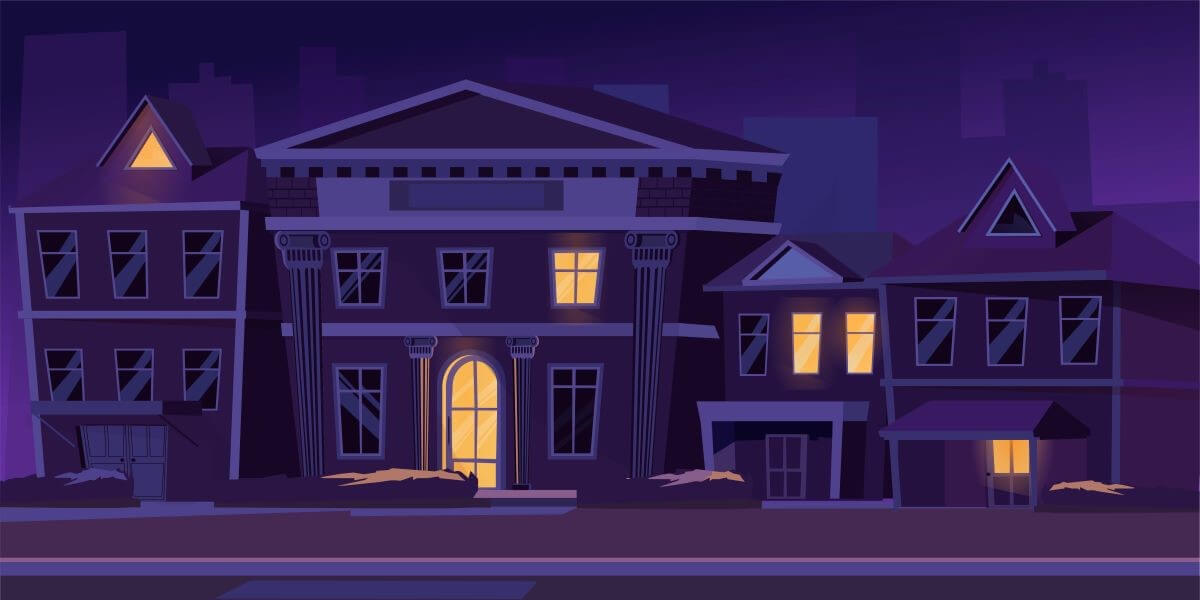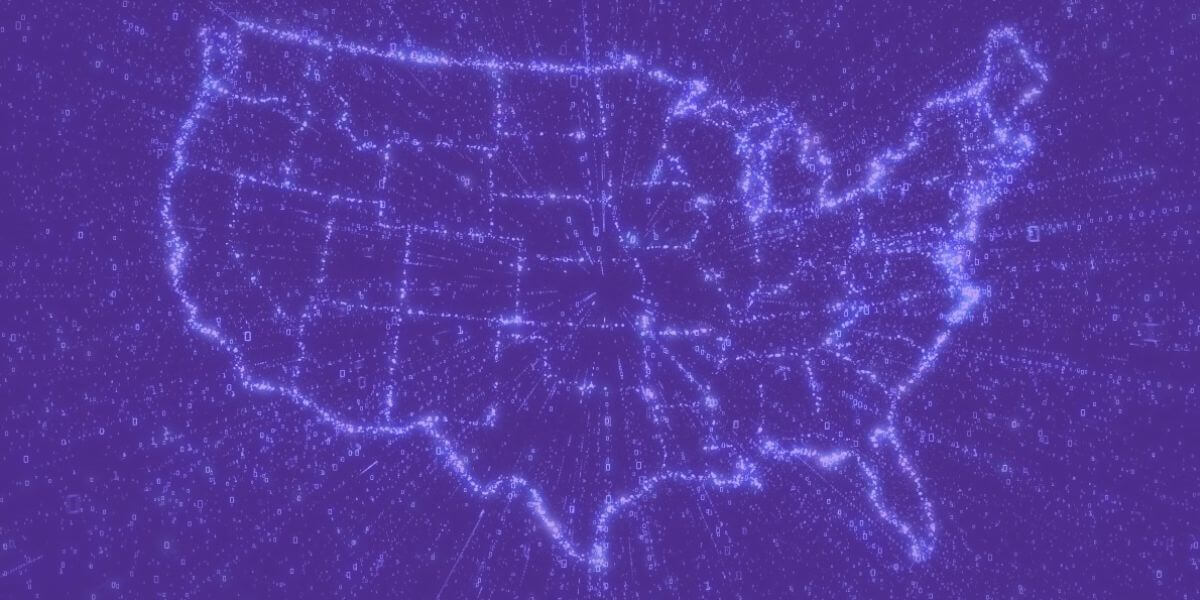Table of Contents
Are you happy with your Internet service?

About the author
Rosslyn Elliott
Watch our provider review videos
Video ReviewsWhich speed do I need?
Tell us what you use Internet for
How many users?
Fiber vs Cable Internet: Understanding the Difference
Do you have a choice to make between fiber internet and cable internet?
Well, by golly, this is your lucky day!
Fiber-optic and cable are the two best internet technologies on the market.
Not everybody has access to both, so you can take a minute to do the Snoopy dance!
But you still need to figure out which of these internet types is going to be best for you.
This overview will explain everything about fiber vs cable internet that might affect your choice.
Read on, lucky consumer! There is no bad choice here.
Fiber-Optic Internet vs. Cable
The first thing you need to know is that today’s cable internet is not made up entirely of copper cable.
What we call “cable internet” is now a hybrid technology that includes both copper cable and fiber lines.
So, when you choose “cable” or “fiber,” you’re not making a choice between all-copper and all-fiber service.
Instead, what you’re choosing is whether there is ANY copper cable in your network.
And that matters. So, let’s get to why these technologies are still going to produce different results for you.

Cable or fiber?
What is the Difference Between Fiber and Cable Internet?
Let’s start with two big statements that are generally true:
1) Fiber internet is faster than cable internet (in some ways).
2) Fiber internet can be cheaper than cable internet (sometimes).
When you actually choose a fiber or cable internet provider, their specific offers will be important. And all sorts of other factors will come into play. Does this ISP have a long track record of good performance? Are customers satisfied with this ISP’s service?
But first, you need to know exactly why these two technologies differ, so you can make the best choice for your needs.
What is Cable Internet?
Today’s cable is not 1980s cable.
The copper wiring for cable internet was originally installed to support cable TV. That’s a good thing, because that coaxial cable was so popular that it spread all over the United States.
Over 85% of American households have coaxial cable wiring. Now, all those homes can get cable internet [1].
But in 2024, cable internet has advanced way beyond its original copper beginnings.
Major cable networks are now HFC, or hybrid fiber-coaxial.
This means that the main lines of the cable internet network are actually fiber-optic lines. Big fiber arteries run from city to city, and all through each city. From those fiber lines, just a short stretch of coaxial cable runs to your home.
Usually, the copper coaxial cable is less than a mile long. Sometimes, the only cable in your network is from your home’s wall to the curb. This is called “Fiber to the Curb” (FTTC).
All that fiber in the network means you can get some really high speeds from the service called “cable internet.” But there are still important differences between a network that is only part fiber vs. a 100% fiber network.
Even the small amount of copper cable in your cable internet network is going to affect your internet performance.
A cable internet connection has unequal download speeds and upload speeds, which is a drastic difference from the symmetrical speeds of 100% fiber internet.
But the good news is that download speeds for cable internet are getting very fast.

Over 85% of U.S. households have cable access
Pros of Cable Internet
Here are the strong points of cable internet:
Fast download speeds
Major cable providers now offer download speeds up to at least 1 Gbps (1000 Mbps). Some even go up to 2 Gigs.
I Gig is more than enough speed for any home use. You will be able to stream all the 4K Ultra HD that you want, on as many devices as you want.
Good prices for fast speeds
Cable internet will usually be the second-best price out of all available internet technologies. Only fiber providers sometimes offer better prices than cable providers.
Cable internet packages will give you much more speed for the money than DSL, satellite, or fixed wireless internet.
Widely available
As we have mentioned, cable internet infrastructure runs all over the nation, sometimes even to rural areas. That makes it available to far more people than fiber internet. For many people, cable will be by far their best option for home internet service.
Breathtaking bundle deals
Some cable providers offer truly amazing bundle deals when you combine TV and/or mobile phone service with your internet. Lately, there has been a trend for the biggest cable companies (such as Spectrum) to offer bundled mobile phone service for only $15-25 per month.
If you have been paying $70/month or more for your cell phone service, these bundles can be a lifesaver for your monthly budget.

Save big with cable’s bundle deals
Cons of Cable Internet
Slower upload speeds
Upload speeds are much slower for cable’s HFC networks than for all-fiber networks.
Average upload speeds for cable internet tend to run 10-50 Mbps in 2024. If you get a gigabit (1000 Mbps) cable internet plan, you will probably get the maximum 50 Mbps upload speed.
To be honest, these upload speeds are not so bad! Most average internet-using households are just fine with 20 Mbps upload speed. And that upload speed is still much faster than any other internet type except fiber.
So, if you get a good cable internet plan with 200 Mbps download speed and 20 Mbps upload speed, you’ll have plenty of bandwidth for most activities, including HD streaming and remote work.
Network congestion
But there is one situation when that slower upload speed might affect your internet activity.
The shared network of cable internet means that your internet may slow down when more people are on the network. So, if a bunch of people in your neighborhood node are all on the internet at typical peak hours (between 7pm and 11 pm), you may get slow responses or upload times.
An even more common situation that slows your internet is having too many devices on your home network. Having multiple devices at once doing HD streaming, online real-time gaming, or videoconferencing can clog up your bandwidth. This will be more obvious if you have a slower plan such as 50 Mbps download, 5 Mbps upload. But even faster plans sometimes bog down with home network congestion.
Fortunately, as cable networks increase their capacity, network congestion is growing rarer. But it does still happen occasionally. If you think your speed is getting slow at night, you can test your actual speed at any time with our internet speed test.
Electromagnetic interference
Because cable internet sends an electrical signal, it can suffer from electromagnetic interference (EMI) from other electric devices or power sources.
A strong electrical signal can disrupt your signal as it travels to your home from your provider. For example, an exterior power line too close to the exterior coaxial cable might cause problems.

Electromagnetic interference
Data caps, sometimes
It’s pretty common for cable internet companies to give you a monthly data allowance —usually called a “data cap.”
Not all cable providers have data caps. And when they do, those data caps are much, much higher than data caps for satellite internet or fixed-wireless internet.
All the same, a data cap does eventually put an upper limit on your internet activity.
When you go over the data cap, you may get an overage charge on your bill. Even more likely is internet throttling, which means that your internet speed will slow down when you go over your monthly limit.
But still , it’s not so bad. Most monthly data allowances from cable companies are at least 1 terabyte (1 TB). That is a very generous data cap, and most users will not even get close to going over it.
16% of monthly users do exceed 1 TB data usage per month [2]. If you have six people in your house doing hours and hours of streaming and gaming, be aware that you may need to watch your data use.
What is Fiber-Optic Internet?
Fiber is the golden child of the digital world, and for good reason.
Fiber-optic internet is the only technology that uses light-based signals instead of electricity or radio waves.
Light-speed is so fast that sci-fi writers have put it in their stories for decades. Fiber internet travels at about 70% of light-speed [3]. And that is way, way faster than electricity or radio waves.
Fiber signals travel through glass or plastic lines using pulses of light.
The innovation in technology means fiber gives you speeds that are in a different league from other internet types.
Not only that, but the speeds you get are symmetrical. Your upload speeds and download speeds will be the same, no matter how fast your fiber plan is.
A fiber provider must give you 100% fiber internet throughout your network. Fiber plugs right into the wall of your home. There is no copper cable along the way, not even from your curb.
For this reason, fiber internet is also called Fiber-to-the-Home (FTTH).
Pros of Fiber Internet
Fiber internet has several major advantages over cable internet (as well as all the other internet types).
Unprecedented, multi-gigabit internet speeds
For a while, most fiber providers were offering 1 or 2 Gig connections.
That’s nothing to sneeze at, especially when you get 1 Gbps upload speed along with your 1 Gbps download speed.
But that was just the beginning.
In the past few years, many fiber providers have expanded their top fiber plans to speeds up to 5000 Mbps (5 Gigs) and 10,000 Mbps (10 Gigs).
The most eye-popping internet speed offer comes from Ziply Fiber, a regional provider that now offers 50 Gigs across its entire fiber footprint. 50,000 Mbps! Here’s the truth, though. You don’t need that much speed. Even Elon Musk doesn’t need that much home internet speed—we think!
But just the availability of that kind of whacked-out, crazy speed shows you that fiber operates in a different world from other internet technologies.
Symmetrical upload speeds and download speeds
No matter what other advantages fiber holds, its biggest plus for home internet users right now is symmetrical speeds.
Your upload speeds will be just as fast as your blistering download speeds.
Enough said.
Low latency
Fiber has the lowest latency of any internet type, averaging about 10-12 ms [4]. Cable internet is also pretty good for latency (13-27 ms), but fiber takes top honors.
Latency affects your internet performance for real-time activities such as gaming and videoconferencing.
To learn more about how latency affects your speed and performance, you can read our full article on latency.

Fiber is fastest
Great prices for fast speeds
It would be natural to think you would pay more for faster internet.
But areas that have fiber internet usually have more internet options available for each household. That means more competition, which leads to better prices.
Fiber exists mainly in areas where population is denser. Even in small cities, you may have a choice of four or five providers in most areas. You may have one fiber provider, one cable provider, one DSL provider, one fixed wireless provider, and some satellite internet choices. In bigger cities, you may even have a choice of two providers of each internet type for a total of ten or more provider choices.
All that competition for your business brings down prices. So, fiber internet often has the lowest prices in the industry, especially for the speeds you will get.
Best security and privacy
Fiber internet lines are harder to physically hack into than copper coaxial cable. With fiber, you get some extra protection from expert hackers trying to commit large-scale crimes. Fiber lines will also deter physical hacking from petty criminals or private detectives trying to spy on your internet activity. Overall, fiber internet is known for better security.
Cons of Cable Internet
There is truly only one negative for fiber internet. Here it is.
Lack of wide availability
There’s just not enough fiber internet. Only about half of American households have the choice of fiber internet service [5].
The advantages of fiber internet are so clear that there are no other drawbacks to the technology.
But fiber internet is expensive to install. Infrastructure takes time and capital to build. And if you live in a rural area, there aren’t many other people around you.
So far, that has meant that not many ISPs have been willing to expand fiber internet to rural areas.
But that may change, because the federal government is now supporting internet expansion across the U.S. to bridge the digital divide.

Only half of U.S. households have fiber access
Cable Internet vs. Fiber Internet: Which One is Right for Me?
Let’s recap the pros and cons of both cable and fiber internet and see how they stack up against one another.
| Cable | Fiber | |
| Pros | Fast download speeds | Unprecedented multi-gigabit speeds |
| Good prices for fast speeds | Symmetrical upload and download speeds | |
| Widely available | Low latency | |
| Breathtaking bundle deals | Best prices for fast speeds | |
| Best security | ||
| Cons | Slower upload speeds | Not available to half of U.S. households |
| Network congestion | ||
| Electromagnetic interference | ||
| Data caps | ||
Making your choice for the best internet provider
As you can see, for most people, fiber internet is clearly going to be a great choice.
But cable internet is not a bad choice either.
Which one you choose may depend on the specific deals offered by each provider, and which providers are available in your area.
For example, if you have a cable internet giant such as Optimum or Spectrum in your area, and your fiber option is a smaller, regional provider, you may want to read our expert provider reviews. That will give you a better feel for all the details, including customer support and hidden fees. You can also use our tool to compare providers.
The Near Future: Cable Gets Seriously Fast with DOCSIS 4.0
One last thing you need to know: cable internet is about to get a lot faster.
Until now, cable internet has functioned on standards known as DOCSIS 3.0 and DOCSIS 3.1.
But over the next few years, some of the biggest cable internet providers will be rolling out the new DOCSIS 4.0 standards.
DOCSIS 4.0 will support such fast speeds for cable internet that cable will again become fully competitive with fiber.
In late 2023, Comcast used DOCSIS 4.0 to roll out the first multi-gig symmetrical speeds for cable internet [6]. Customers in Colorado Springs, Atlanta, and Philadelphia could get symmetrical speeds of up to 2 Gbps (2000 Mbps).
Cabl internet industry experts have already achieved speeds as high as 8.5 Gbps download/6 Gbps upload speed in Charter/Spectrum’s tests based on DOCSIS 4.0 technology [7].
What’s in it for you? Well, if 1 Gig is enough for you now (and it’s enough for most people!), your cable provider may have a lot more to offer you in another year or so.
Most importantly, you may be able to get symmetrical speeds from cable internet. And that will be the real game-changer. If cable providers can really start offering 2 Gigs or more of symmetrical speed within a year or two, that will be more than enough to go head-to-head with fiber providers.

DOCSIS 4.0 will transform cable internet speed
Sources
[1] NCTA.com. “85% of U.S. Households Have Cable High-Speed Internet Available."
[3] Wired.com. “Internet at the Speed of Light."
[4] FCC.gov. “Measuring Fixed Broadband: Tenth Report."
[5] FierceTelecom.com. “More than 50% of U.S. Homes Now Have Access to Fiber."
[7] FierceTelecom.com. “Charter Hits 8.5 Gbps in DOCSIS 4.0 Test."
Explore Our Most Recent Blogs

About the author
